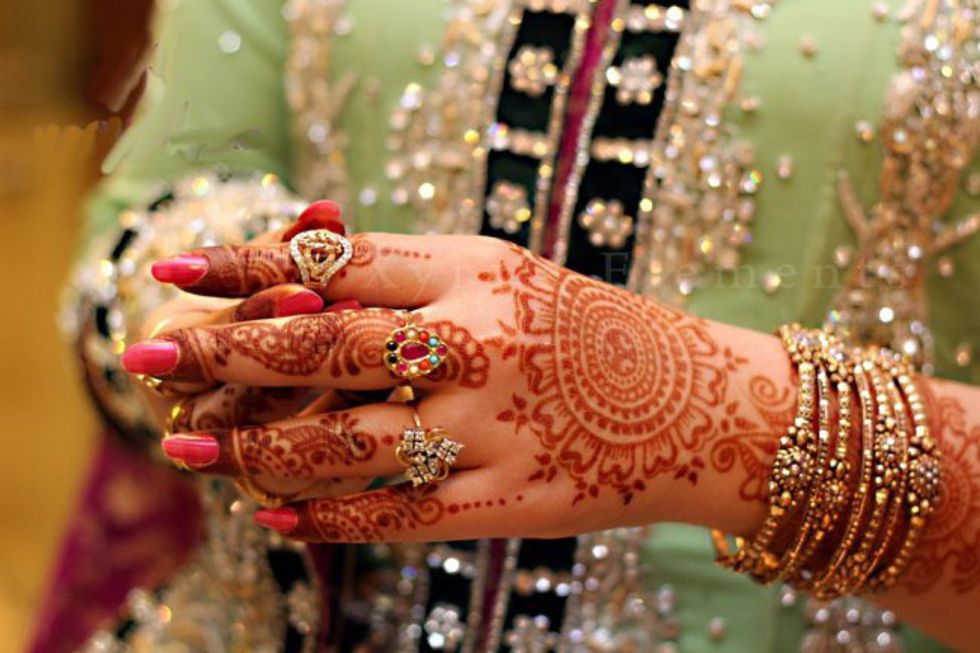A few weeks back, returning from my grad trip from Goa, I decided to stay with a family friend in Delhi. Delhi, as it's famously known, is the capital of the Indian subcontinent. Delhi is home to 18 million people and is the second most populous city in India, mostly because of its metropolitan status and close proximity to the Indian political and judiciary systems.
Half an hour past my arrival, the stay condensed into a dinner table talk full of political rants, few quips about Trump (yes, we love him here, too), the intolerable Delhi heat, and before anyone could guess, we were talking about wealth. Naturally. The family friend, a jewelry retailer, launched into a long anecdote as to how the well-dressed, well-kept customers often just sauntered around the store—window-shopping, buying nothing. On the other hand, the rich rural ‘jats’, half-literate and half-clad, ended up contributing to the majority of their earnings. The topic took off and then, a fellow Delhi-ite commented on how her friends are playing the devious Game of Loans, purchasing cars beyond their budget, but the brand names being the sole entry ticket into a favorable socialite group. She even revealed how many of the teenagers she knew resorted to buying the latest version of their phone as soon as it released as retaining the outdated one reflected a ‘poor social standing’. Then, it occurred to me. Each clue added up. It all made sense. How almost everyone at the Delhi airport could afford Louis Vuitton bags… they were clever mock-ups and you’ll easily find them in the throngs of hawkers in Lajpat Nagar or Janpat in New Delhi.
Delhi street markets: Brand Mock-ups
I tried sleeping. I tried sleeping under a warm blanket with the Louis Vuitton print (oh, the irony!) that night but the discussion coiled at the back of my head, stubborn to bid farewell as much as I forced it to. And so, I thought and I thought and I thought once again. Remembering another incident from last winter wherein “money was the ultimate trophy in the rat race, the ultimate crown of an improved life”. The custom of ‘arranged’ marriages, i.e. the whole family ‘arranges’ this holy matrimony aka marriage between two people. The whole process is annoyingly similar to job recruitment and, believe it or not, you have to send in a resume but with a twist: current income, family tree, and your deceptively and cinematically ‘fair and lovely’ picture. Without derailing further, the pair seemed perfect with one another, even their kundali’s seemed to align and it all came down to one dialogue. “Show me the money”. Yes, the family wealth. The groom’s family’s estimated wealth approximated to 200 million rupees, combining all assets and everything and right there and then, he went to the ‘rejection pile’. Give me a break. The bride-to-be hadn’t had a word of thought, perhaps wasn’t even aware that marriage proposals were being evaluated but her parents decided that much money wasn’t enough for their daughter was to have a stable, adversity-less future. What was incomprehensible to the groom’s parents was why. Their son had a degree in Finance from London School Of Economics and their new company was beginning to grow, but their assets, oh they weren’t that plenty to entice a beautiful bride? Another sad example of how money has conveniently blinded India, how we have begun equating money with everything, we have begun defining our ‘n’ figure salary with our being. Are we just mere numbers these days?
Symbolic of the role of wealth in Indian arranged marriages
Might seem implausible at first but another strata of the society is contesting in the Rupee Race: the helper-class consisting of house-keepers, sweepers, drivers in India (Note: These helpers are not a luxury but typically a necessity in Indian households due to high supply of low-skilled labor, unlike in Western countries). Believe it or not, even the drivers ask my father for his US Polo shirts after he’s worn them enough times. My maid asks for my mom’s old silk Sarisand let me tell you one thing: they sell for a steep price. Might I add, I have eavesdropped on many of them gloating on their phones as to how they purchased these items of clothing themselves. If you try to offer them anything sans labels or names of prominence stamped on them, they will decline your offer, categorically too. Ask why? They are aware of the ‘dress to impress’ psychology. They know this race all too well; don’t be fooled.
Materialism. Consumerism. And so much more –isms have pervaded India and while I am not vilifying it, I mean to bring it to everyone’s notice how it has eroded India’s culture of spirituality, selflessness, and humility. Are we so hell-bent on the pursuit of social acceptance, on ‘appearing’ better against the stark reality of our existence that we delude, even ourselves into this whirlpool? Not to forget, how we are warping our psychological and emotional reasoning to ‘keep up with the Kapoors’. The immense financial strain coupled with the above has dangerously produced a generation that wants to jump pebbles after pebbles without enjoying their stay on the one they belong to. I agree, social mobility especially when you have worked for it is possible and applaudable but faking a reality that isn’t, is just au contraire. In this Rupee Race or Dollar Daze or Pound Phase, since this phenomenon is occurring worldwide, have we shown what we humans are truly made up of? Hint: not stardust or fairy dust or any nonsense people call it these days. Give it a thought, discuss, and let me know that if these are the rules of the game, why are we still playing it?


















